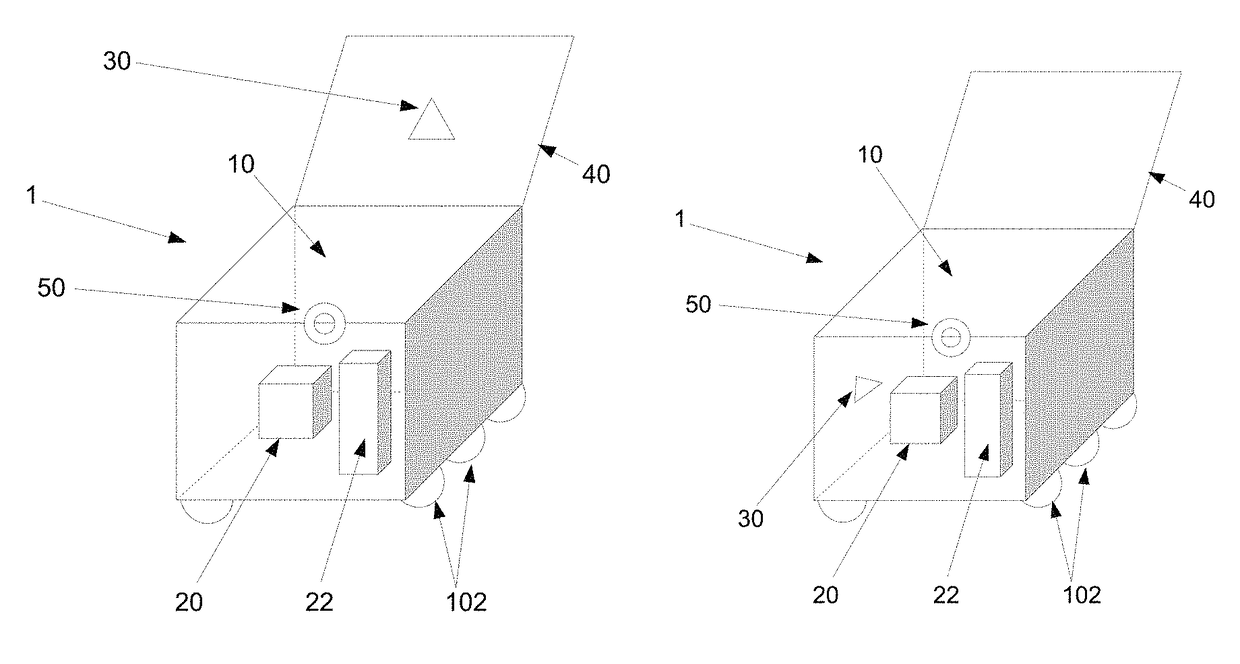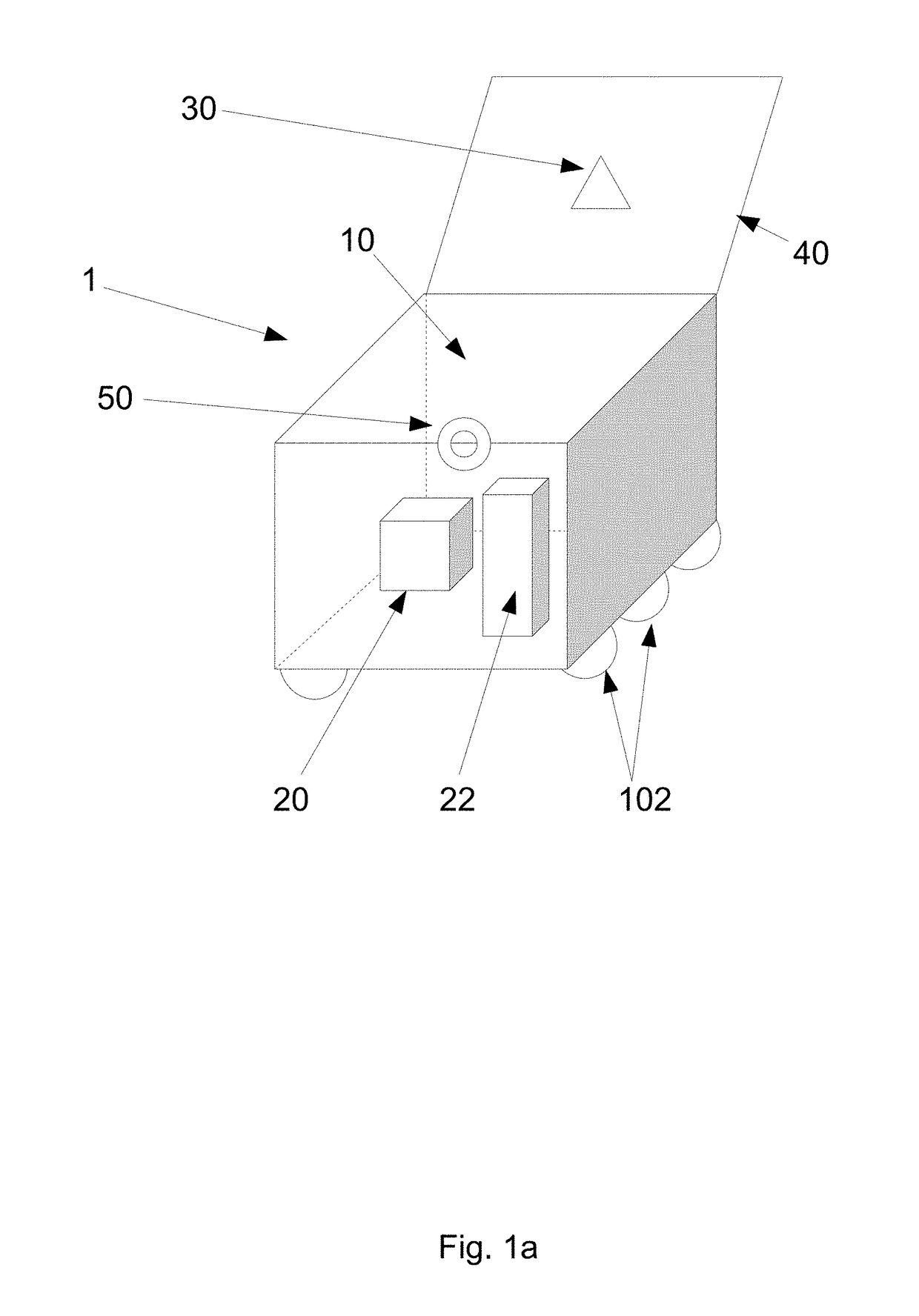System and method for securely delivering packages to different delivery recipients with a single vehicle
a delivery recipient and package technology, applied in the field of mobile robot delivery, can solve the problems of inconvenience for delivery recipients, high cost of delivery to customers' doors or mailboxes, and low chance of misidentification, so as to improve security, improve delivery efficiency, and improve the effect of security
- Summary
- Abstract
- Description
- Claims
- Application Information
AI Technical Summary
Benefits of technology
Problems solved by technology
Method used
Image
Examples
Embodiment Construction
[0121]In the following, exemplary embodiments of the invention will be described, referring to the figures. These examples are provided to provide further understanding of the invention, without limiting its scope.
[0122]In the following description, a series of features and / or steps are described. The skilled person will appreciate that unless required by the context, the order of features and steps is not critical for the resulting configuration and its effect. Further, it will be apparent to the skilled person that irrespective of the order of features and steps, the presence or absence of time delay between steps, can be present between some or all of the described steps.
[0123]FIGS. 1a, 1b, 1c, and 1d depict embodiments of a mobile robot 1 according to one aspect of the invention. The mobile robot 1 comprises wheels 102 adapted to drive the mobile robot 1 at least to and from delivery locations. In the depicted embodiment, the robot 1 comprises six wheels 102, but the number can ...
PUM
 Login to View More
Login to View More Abstract
Description
Claims
Application Information
 Login to View More
Login to View More - R&D
- Intellectual Property
- Life Sciences
- Materials
- Tech Scout
- Unparalleled Data Quality
- Higher Quality Content
- 60% Fewer Hallucinations
Browse by: Latest US Patents, China's latest patents, Technical Efficacy Thesaurus, Application Domain, Technology Topic, Popular Technical Reports.
© 2025 PatSnap. All rights reserved.Legal|Privacy policy|Modern Slavery Act Transparency Statement|Sitemap|About US| Contact US: help@patsnap.com



